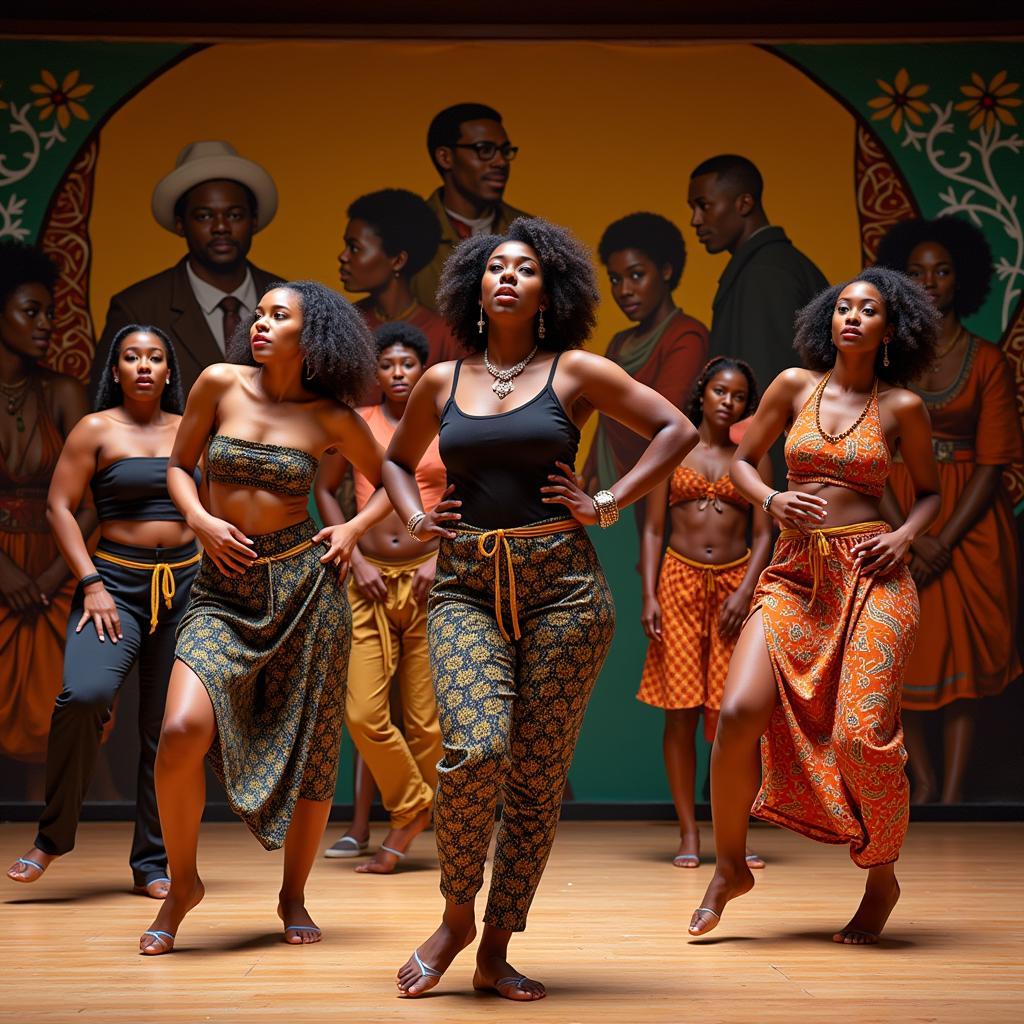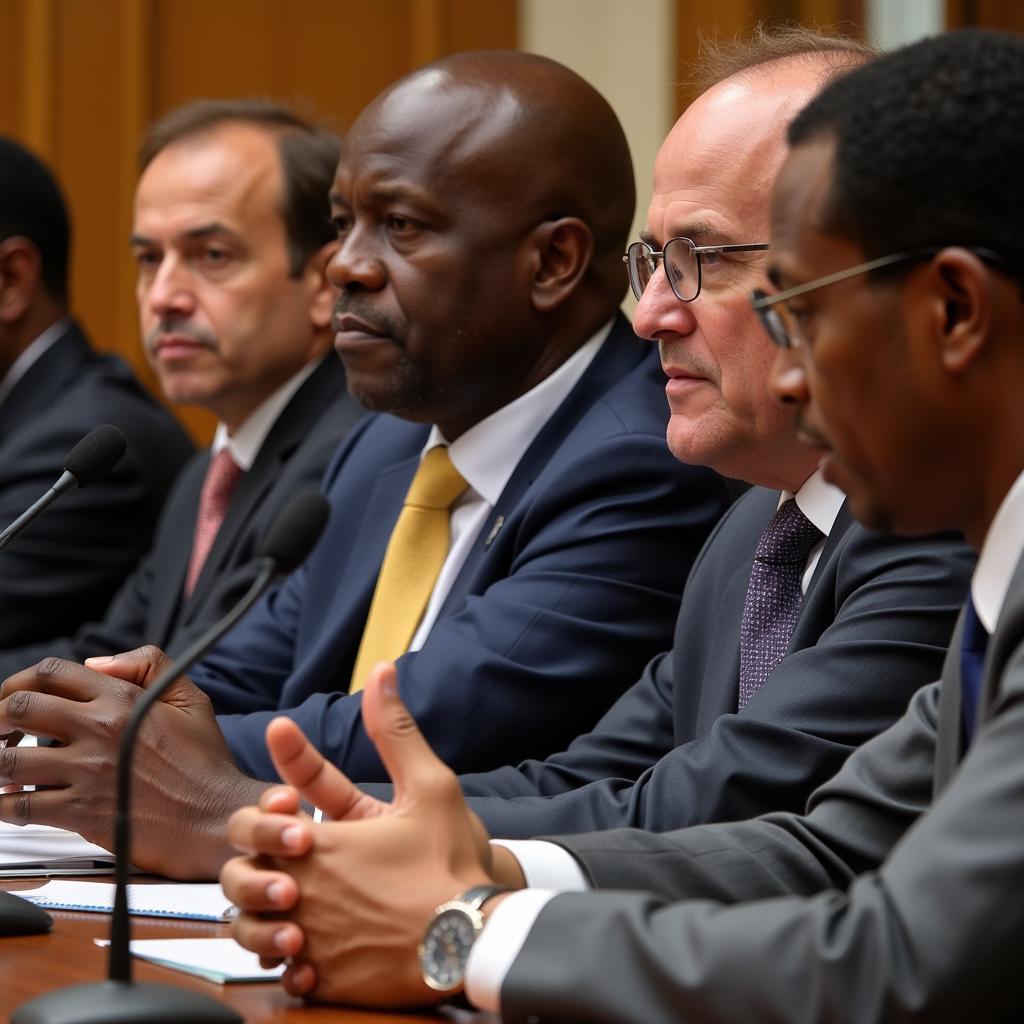Exploring the Dynamic World of African Hip Dance
African Hip Dance is a vibrant and evolving art form that blends traditional African movements with the dynamism of hip hop. It’s a powerful expression of culture, creativity, and social commentary, reflecting the diverse rhythms and traditions of the African continent while embracing the global language of hip hop. This exploration delves into the rich history, diverse styles, and growing influence of African hip dance.
The Roots and Evolution of African Hip Dance
African hip dance isn’t simply a mimicry of American hip hop; it’s a unique fusion born from a rich tapestry of traditional African dance forms. These ancient dances, often deeply rooted in spiritual and social practices, provide the foundation for the complex rhythms, fluid movements, and powerful storytelling found in contemporary African hip dance. The introduction of hip hop culture in the late 20th century provided a new canvas for these traditional elements, leading to a dynamic exchange of styles and a powerful new form of artistic expression. This fusion wasn’t just about adopting new moves; it was about reimagining tradition and creating something entirely new. For many young Africans, it became a way to connect with their heritage while simultaneously engaging with a global phenomenon. It offered a powerful platform to express their lived experiences, dreams, and aspirations. You can see traces of traditional dances in the footwork, the isolations, and the overall energy of many African hip hop styles.
 African Hip Hop Dance: Blending Tradition and Modernity
African Hip Hop Dance: Blending Tradition and Modernity
The rise of music videos and social media has played a crucial role in the globalization of African hip dance. Artists like Fally Ipupa and Koffi Olomide have incorporated intricate dance sequences into their music videos, showcasing the unique energy and style of African hip hop to a global audience. Platforms like TikTok and Instagram have further amplified this reach, allowing dancers from across the continent to share their creativity and connect with a wider community. This digital landscape has not only fostered innovation but also created opportunities for collaboration and cross-cultural exchange.
Diverse Styles and Regional Influences in African Hip Dance
African hip dance is not a monolithic entity; it encompasses a multitude of styles, each reflecting the unique cultural nuances of its region. From the energetic Coupé-Décalé of Ivory Coast to the vibrant Azonto of Ghana, each style brings its own distinct flavor to the mix. Kuduro from Angola incorporates elements of traditional Angolan dance with electronic music and hip hop, while Pantsula from South Africa, with its fast-paced footwork and intricate choreography, tells stories of resilience and resistance. Exploring these different styles reveals the rich diversity of African culture and the boundless creativity of its artists. These diverse regional variations contribute to the rich tapestry of African hip dance, making it a constantly evolving and dynamic art form.
For example, Coupé-Décalé, known for its energetic and often flamboyant style, reflects the vibrant nightlife and celebratory spirit of Ivory Coast. Azonto, with its infectious rhythms and playful movements, embodies the youthful energy of Ghana’s music scene. Understanding the cultural context of each style adds another layer of appreciation for the artistry and depth of African hip dance. This fusion of traditional and contemporary elements makes African hip dance a vibrant and ever-evolving expression of cultural identity. Check out African hip hop dance to learn more about this vibrant style.
The Global Impact and Future of African Hip Dance
African hip dance has transcended geographical boundaries and become a global phenomenon. Its influence can be seen in music videos, dance studios, and even on fashion runways around the world. The dynamic energy and unique styles of African hip hop have captivated audiences internationally, inspiring dancers and choreographers to incorporate its elements into their own work. This global embrace has not only elevated the visibility of African dance but also fostered a greater appreciation for African culture as a whole.
This rising global popularity is also creating opportunities for African dancers and choreographers to showcase their talent on an international stage. From collaborating with renowned artists to leading workshops and performances worldwide, they are sharing their unique artistry and contributing to the evolution of global dance culture. What is the significance of african dance black magic? This resource can offer valuable insights. Looking ahead, the future of African hip dance appears bright, poised to continue its trajectory of innovation, collaboration, and global influence.
Conclusion
African hip dance is more than just a dance form; it’s a vibrant expression of African culture, a testament to the power of creativity, and a celebration of the dynamic exchange between tradition and innovation. From its roots in ancient African dance traditions to its current global impact, African hip dance continues to evolve, captivating audiences and inspiring artists worldwide. As it continues to gain recognition and influence, African hip dance promises to further enrich the global dance landscape and offer a powerful platform for cultural exchange and artistic expression. Explore the world of african diaspora art for a wider understanding of African artistic expression.
FAQ
- What are the origins of African hip dance? It’s a fusion of traditional African dance and hip hop.
- What are some popular styles of African hip dance? Coupé-Décalé, Azonto, Kuduro, and Pantsula.
- How has social media impacted African hip dance? It’s amplified its reach and fostered global connections.
- Where can I learn African hip dance? Search for african hip hop dance classes near me.
- Who are some influential African hip hop dancers? Many talented dancers are gaining prominence online and through music videos.
- What is the future of African hip dance? Continued innovation and global influence.
- How does African hip dance reflect African culture? It incorporates rhythms, movements, and storytelling traditions.
Common Scenarios and Questions about African Hip Dance
- Scenario: Someone wants to learn African hip dance but doesn’t know where to start. Question: Where can I find classes or resources for beginners?
- Scenario: A choreographer is interested in incorporating African hip hop elements into their work. Question: How can I respectfully integrate these styles without appropriating the culture?
- Scenario: A researcher is studying the cultural significance of African hip dance. Question: What are some key academic resources on this topic?
Further Exploration
Explore more about the vibrant imagery surrounding this art form with african hiphhop dancers hd images. What other topics related to African dance and music are you interested in learning about?
Call to Action
Need assistance? Contact us 24/7: Phone: +255768904061, Email: kaka.mag@gmail.com, or visit us in Mbarali DC Mawindi, Kangaga, Tanzania.



